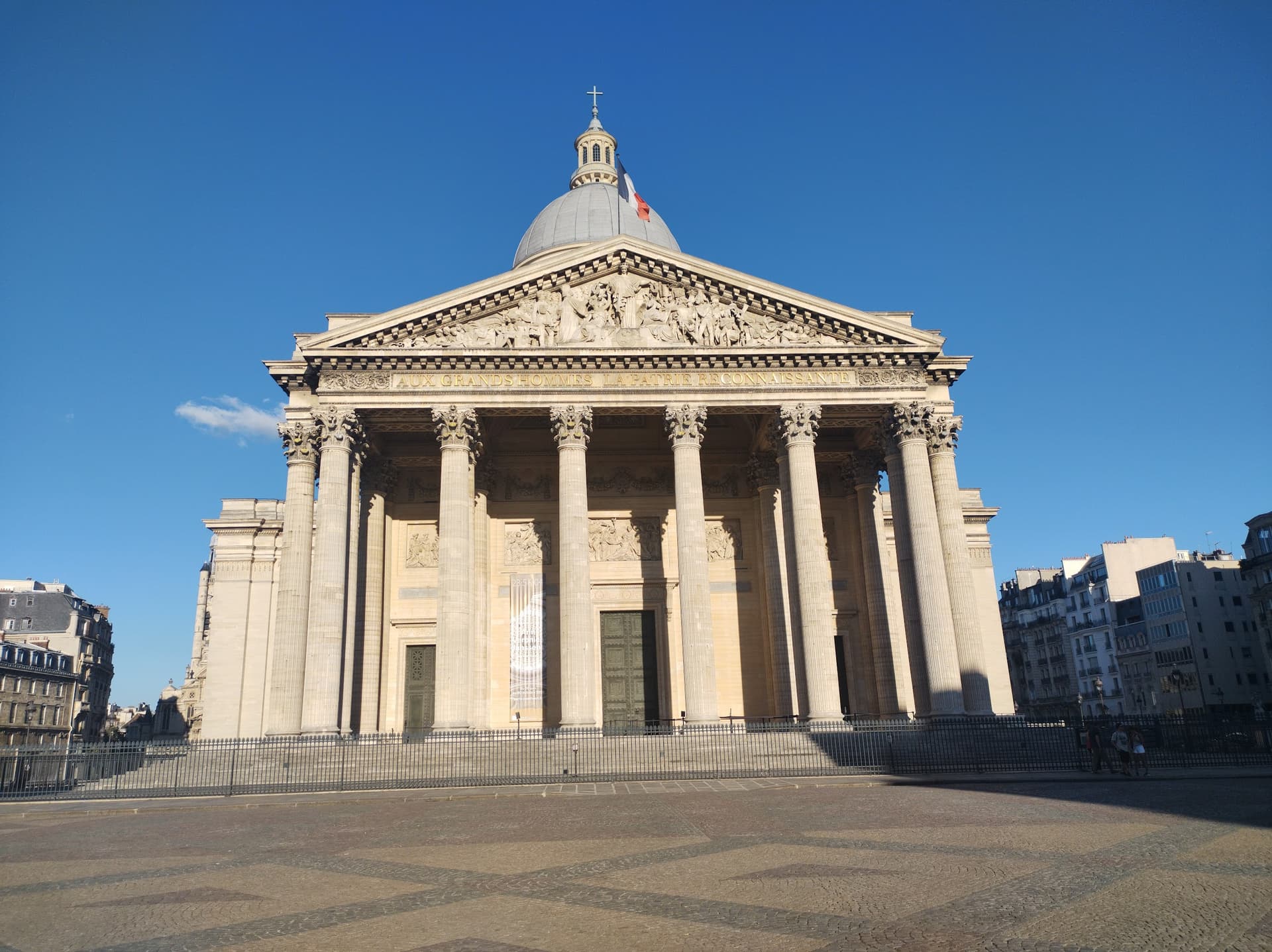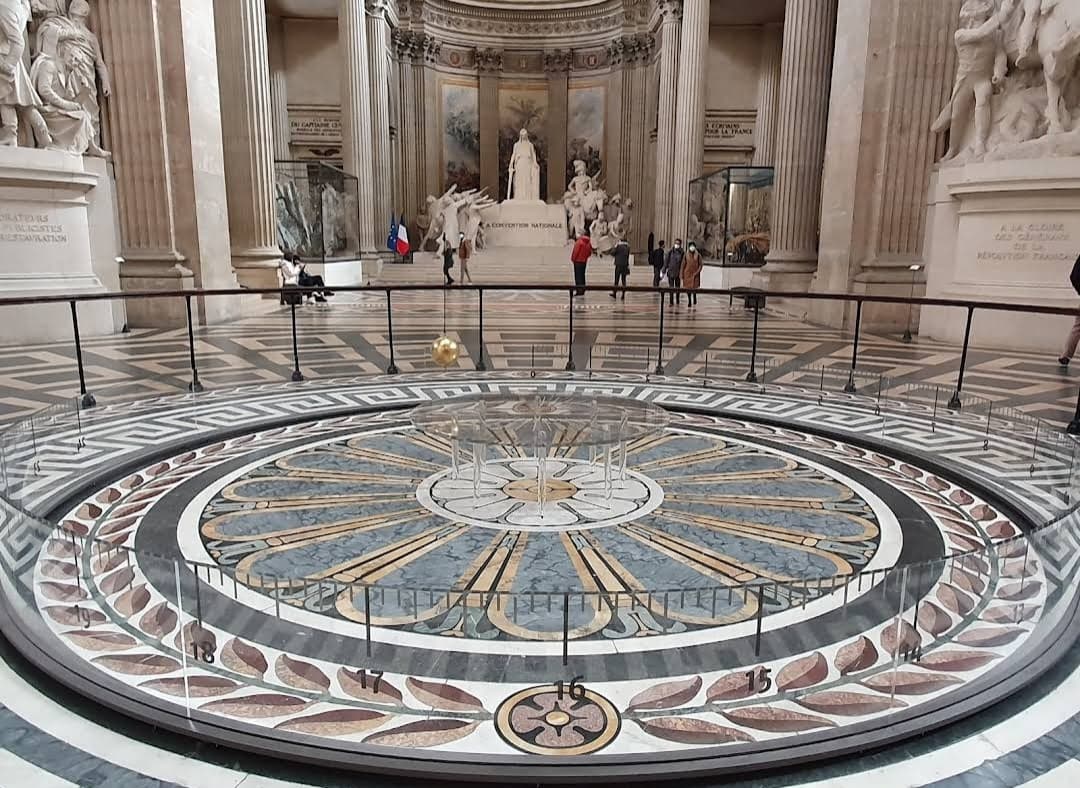Audio GuidePanthéon
18th-century mausoleum with colonnaded facade, housing remains of notable French citizens.
In the heart of Paris’s Latin Quarter stands the Panthéon, a majestic building on the hill of Sainte-Geneviève. At first sight, its classical grandeur draws your attention: rows of tall Corinthian columns lead to a vast colonnaded façade, while a grand domed roof towers above, echoing ancient Roman temples. It was King Louis the Fifteenth who began this ambitious project in the middle of the eighteenth century, after recovering from a severe illness. Out of gratitude, he promised to build a church honoring Saint Genevieve, Paris’s patron saint. Ironically, while the king survived, his beloved mistress did not.
Construction started in the seventeen-fifties. Designed by Jacques-Germain Soufflot, the Panthéon brings together Greek columns, Baroque drama, Romanesque domes, and hints of Gothic height. Yet its style today feels resolutely neoclassical. By the time the building was finished, France had changed. The Revolution was raging, the monarchy had fallen, and the church soon became a national mausoleum for “great people,” as engraved above the entrance.
Inside the solemn crypt rest the remains of France’s most revered citizens: Voltaire, philosopher of the Enlightenment; Jean-Jacques Rousseau, author and thinker; Victor Hugo, whose stories gave voice to Paris’s people; Émile Zola, champion of social justice; Marie Curie, the pioneering scientist, and Alexandre Dumas, author of The Three Musketeers, added only after many years of debate.
Suspended beneath the soaring dome is a gentle but mesmerizing Foucault Pendulum, a replica of the one used in the nineteenth century to prove that the Earth spins.
Today, visitors can climb hundreds of steps to reach the dome’s viewing platform, where one of Paris’s most breathtaking panoramas awaits. Only a handful of guests at a time stand above the city’s rooftops—a tranquil, almost secret vantage point. The Panthéon continues to symbolize French pride and intellectual legacy, a resting place for those whose lives shaped the nation’s story.



